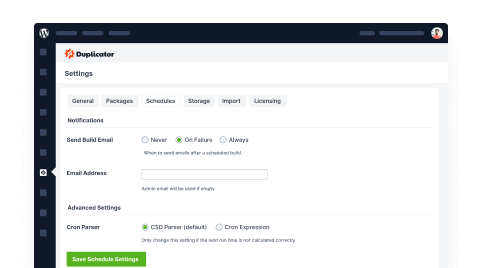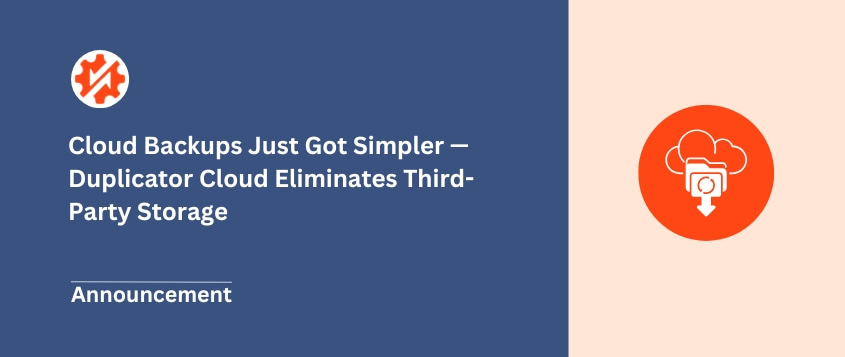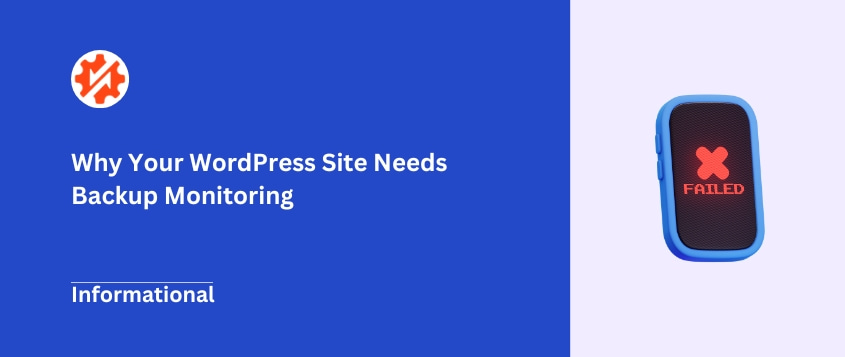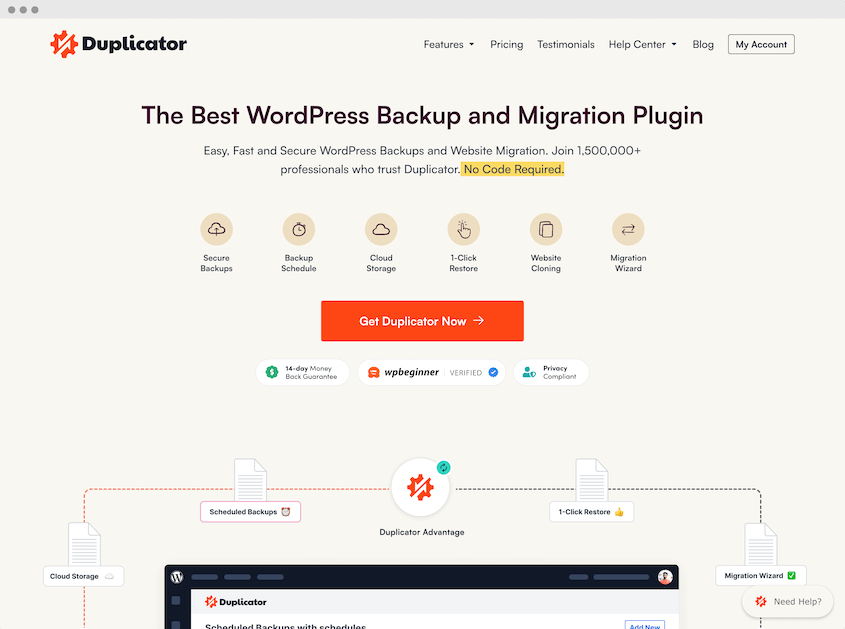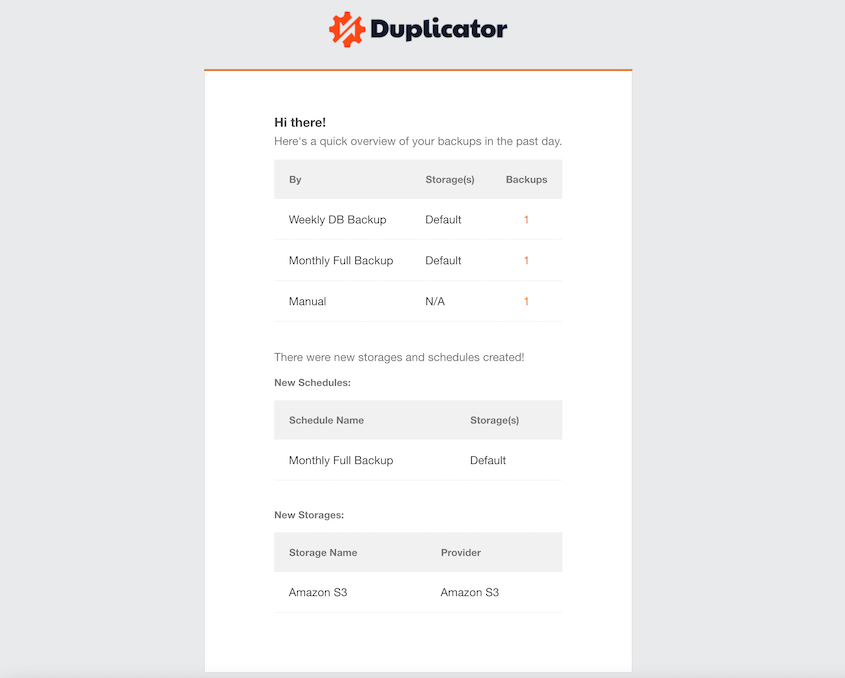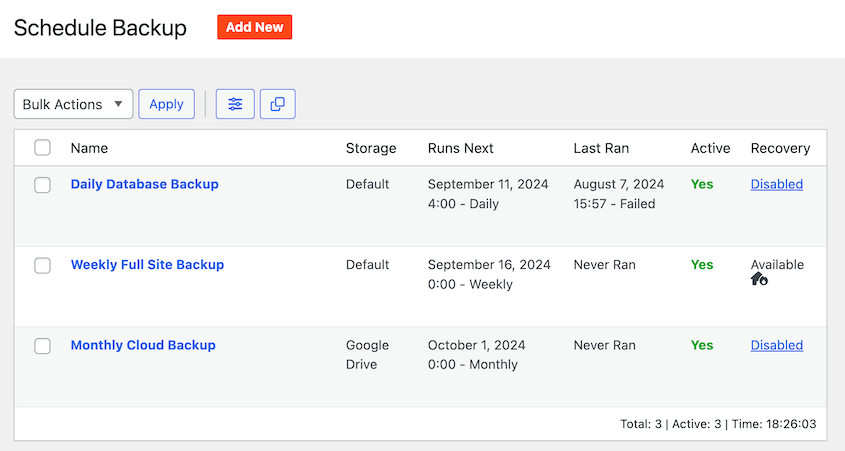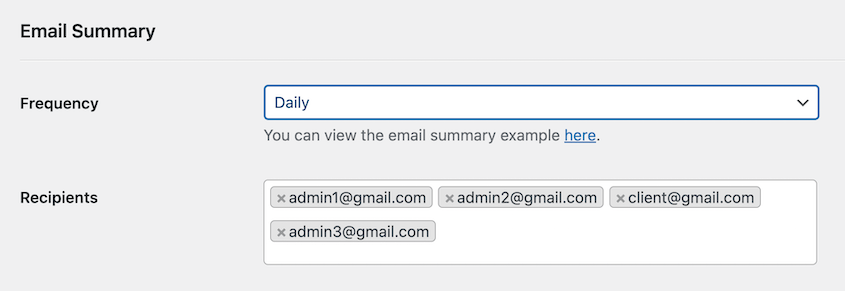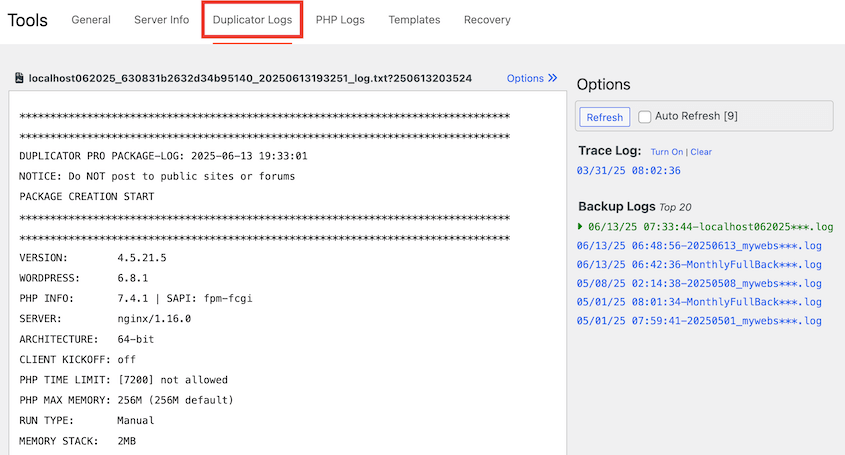Many website owners assume their backups are working correctly, but they never actually verify it. They’re flying blind, trusting a system they haven’t checked in months.
Backup monitoring solves this problem by actively watching the backup process. It ensures your backups aren’t just running, they’re actually protecting your data.
In this post, we’ll explore what backup monitoring is, why it’s non-negotiable for your website, and how to use it properly.
Your data’s safety depends on more than just having backups. You’ll have to know those backups will work when you need them most!
Table of Contents
What Is Backup Monitoring?
Backup monitoring isn’t a set-it-and-forget-it task. It’s an active, ongoing process that keeps tabs on your entire backup strategy.
Think of it as your backup’s health checkup. You’re not just verifying that backups are scheduled — you’re confirming they’re completing, storing properly, and remaining usable.
The process involves systematically checking three critical stages: backup creation, storage, and restorability. Each stage can fail independently, which is why monitoring all three matters.
Most people assume their backups are working because they set them up once and received a few success emails. But assumptions are dangerous when your website’s life is on the line.
Backup monitoring transforms those assumptions into facts. It tells you definitively whether your backups are protecting your data or just taking up server space.
Why Monitor Your Website Backups?
The biggest threat to your website isn’t hackers or server crashes, it’s silent backup failures.
Backups can fail in dozens of ways without sending you an alert.
A database might be locked during backup, causing incomplete data capture. Storage space could run out mid-backup. Network interruptions might corrupt uploads to cloud storage.
These failures can go unnoticed for weeks or months. You might only discover them when disaster strikes and you need to restore a clean backup.
Proper backup monitoring delivers several benefits:
- Defense against data loss: You’ll catch backup problems before they become data recovery nightmares.
- Faster site recovery: When you know your backups are solid, restoration becomes a quick process instead of a desperate scramble.
- Business continuity: Reliable backups mean minimal downtime when things go wrong.
- Early warning system: Backup failures often signal other website issues like storage problems or plugin conflicts.
- Peace of mind: You’ll sleep better knowing your website’s safety net is actually there.
The cost of monitoring is minimal compared to the potential cost of data loss. A few minutes of setup can save you days of recovery work.
Key Backup Factors to Monitor
Effective backup monitoring covers multiple checkpoints throughout the backup process. Missing any one of these can leave you vulnerable.
Backup Completion
Running a backup and completing a backup are two different things. Your monitoring needs to verify that backups start and finish successfully.
Check that all critical components are included in each backup. Your WordPress files, database, uploads folder, and any custom configurations should all be captured.
Partial backups can be useful in certain situations, but for a full-site recovery, you’ll need full backups.
I’d suggest paying attention to backup file sizes too. If your latest backup is significantly smaller than the previous ones, something probably went wrong during creation.
Storage Location Health & Availability
Your backup destination needs constant monitoring, whether it’s cloud storage, a local disk, or an FTP server.
Start with basic reachability. Can your backup system still connect to the storage location? FTP passwords expire, cloud service authentication tokens need renewal, and network configurations change.
Monitor available storage space, especially for FTP servers with strict quotas. A backup could fail halfway through due to insufficient space.
Check connection stability too. Slow or interrupted uploads can corrupt backup files even if they appear to be completed successfully. This is particularly common with large database backups over unreliable connections.
Don’t forget security monitoring. Ensure your backup storage hasn’t been compromised and that access credentials remain secure. Data protection extends beyond just creating backups — it includes securing the storage locations where they live.
Backup Age & Retention Policy
Old backups create a false sense of security. Monitor how recent your latest backup is relative to your website’s activity level.
If you update content daily but your newest backup is a week old, you’re risking significant data loss. Your backup schedule should match your site’s change frequency.
Retention policy monitoring is equally important.
Verify that old backups are being deleted. Accumulated backups can consume storage space and potentially create security risks if they contain outdated but sensitive information.
Check that your retention policy makes sense for your needs. Keeping daily backups for a month and monthly backups for a year is common, but your situation might require different timing.
Backup Restorability
This is the ultimate test of your backup system. A backup that can’t be restored is worthless, regardless of how perfect it looks.
Schedule regular test restores to a staging environment. Check that the restore process runs and that the restored site works.
After each test restore, check data completeness, site functionality, and user access. Browse through pages, test forms, verify user accounts, and confirm that databases are properly connected.
Document your test restore results. Note any issues you discover and track whether they’re isolated incidents or recurring problems that need fixing.
Many backup failures only become apparent during restoration. Regular testing catches these issues while you still have time to fix your backup process.
How to Implement Effective Backup Monitoring
Duplicator is a WordPress backup plugin with built-in monitoring. It provides clear success and failure messages when creating backups. You’ll know immediately if something goes wrong during backup creation.
The plugin maintains detailed logs within your WordPress dashboard. These logs capture warnings and errors that might not trigger failure alerts but still indicate problems.
Automated scheduled backups run without manual intervention, and you receive email notifications for both successes and failures. You’ll know if your backups successfully reach their destination or encounter upload issues.
The Pro version tracks storage limits and handles cleanup automatically. It also provides an overview of all scheduled backups and their last run status, giving you a backup dashboard of your backup health.
To get consistent notifications, use an email address you check regularly, and consider setting up a dedicated email for backup alerts.
Learn where to find Duplicator logs and how to interpret them. The logs contain detailed information about each backup process, including warnings that might not trigger alerts.
Choose alert methods you’ll actually notice. Email works for most people, but consider Slack notifications for teams or SMS alerts for critical sites.
You can set up backup failure alerts with Uncanny Automator and Duplicator Pro.
Automation handles the heavy lifting, but occasional manual checks catch edge cases. Spend five minutes weekly reviewing backup logs and storage status.
Backup Monitoring Best Practices
For the best results, I’d recommend periodically simulating backup failures to ensure your alerts are sent.
Try disconnecting storage, filling up disk space, or temporarily breaking database connections. Verify that your monitoring catches these issues promptly.
Backup alerts demand immediate attention. Even minor warnings can escalate into major problems if ignored.
If you follow the 3-2-1 backup rule (or the newer 4-3-2-1 rule), monitor every copy independently. A failure in one location doesn’t mean the others are working correctly.
Automate routine checks but maintain human involvement in the process. Automated systems can miss context that humans would catch.
Review monitoring reports regularly, even when everything appears normal. Trends in backup performance can indicate developing issues.
Frequently Asked Questions (FAQs)
What is the 4-3-2-1 backup rule?
The 4-3-2-1 rule extends the 3-2-1 backup rule by adding a fourth copy that’s either immutable (can’t be changed) or air-gapped (completely disconnected from networks). This extra copy protects against ransomware and other attacks that might compromise your regular backups.
Monitoring becomes more complex with additional backup copies, but the principle remains the same: verify that each copy is being created, stored, and maintained properly.
What’s the best backup monitoring service?
The best backup monitoring service for WordPress sites is Duplicator Pro. It provides automated backup scheduling, email notifications for backup status, and quick site recovery options. Duplicator Pro simplifies backup management by combining backup monitoring and migration tools in a single, reliable plugin for site owners.
What are some common signs that my backup monitoring is detecting a problem?
Common signs that backup monitoring is detecting a problem include failed backup notifications, incomplete or missing backup files, unusually long backup times, and repeated error messages. Some systems may also flag irregular file changes or unexpected storage usage increases.
How often should I actively monitor my backups?
Actively monitor backups at least once per day to ensure data integrity and timely issue detection. High-traffic or critical websites should implement real-time monitoring for maximum protection. Regular checks reduce downtime and confirm that backups complete successfully without errors.
Your Data Deserves Vigilant Protection
Backups without monitoring are just expensive storage consumption. Monitoring catches problems before they become disasters and gives you confidence that your data is truly protected.
Take some time to review your current backup monitoring setup. If you don’t have one, start building it.
If you do have monitoring, test it to ensure it’s actually working.
If you’re using the free version of Duplicator, consider upgrading to Duplicator Pro for comprehensive backup monitoring! The automated scheduling, email notifications, and detailed logging can transform your backup strategy from reactive to proactive.
While you’re here, I think you’ll like these hand-picked resources:
Joella is a writer with years of experience in WordPress. At Duplicator, she specializes in site maintenance — from basic backups to large-scale migrations. Her ultimate goal is to make sure your WordPress website is safe and ready for growth.

